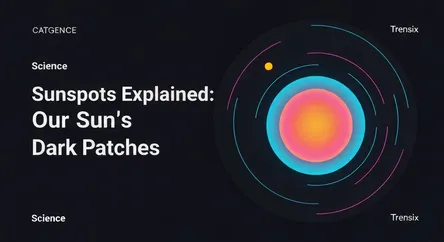Science
Sunspots Explained: Our Sun's Dark Patches

Discover sunspots, the temporary dark areas on the Sun's surface. Learn how these magnetic phenomena create space weather that can affect Earth.
What is it?
Sunspots are temporary phenomena on the Sun's photosphere that appear as dark spots compared to surrounding regions. They are areas of reduced surface temperature caused by concentrations of magnetic flux that inhibit convection. A sunspot is actually an area of intense magnetic activity, and they usually appear in pairs with opposite magnetic polarity. While they look dark, they are still incredibly hot, with temperatures around 6,300°F (3,500°C). Their number and location vary according to the roughly 11-year solar cycle, moving from higher to lower latitudes on the Sun as the cycle progresses.
Why is it trending?
The Sun is currently approaching the peak of Solar Cycle 25, expected around 2024-2025. This phase, known as the solar maximum, is characterized by a significant increase in the number and size of sunspots. This heightened activity makes them more easily observable and increases the frequency of associated solar events. Astronomers and space weather agencies are closely monitoring this activity, leading to more news coverage and public interest in understanding these solar features and their potential impacts.
How does it affect people?
Sunspots are the primary source of major space weather events. The intense magnetic fields associated with them can become unstable and release massive bursts of energy in the form of solar flares and coronal mass ejections (CMEs). When directed at Earth, these events can disrupt satellite operations, GPS navigation, and high-frequency radio communications. They can also induce currents in power grids, potentially causing blackouts. On a brighter note, this increased solar activity also creates more frequent and spectacular auroras (Northern and Southern Lights), making them visible in lower latitudes than usual.